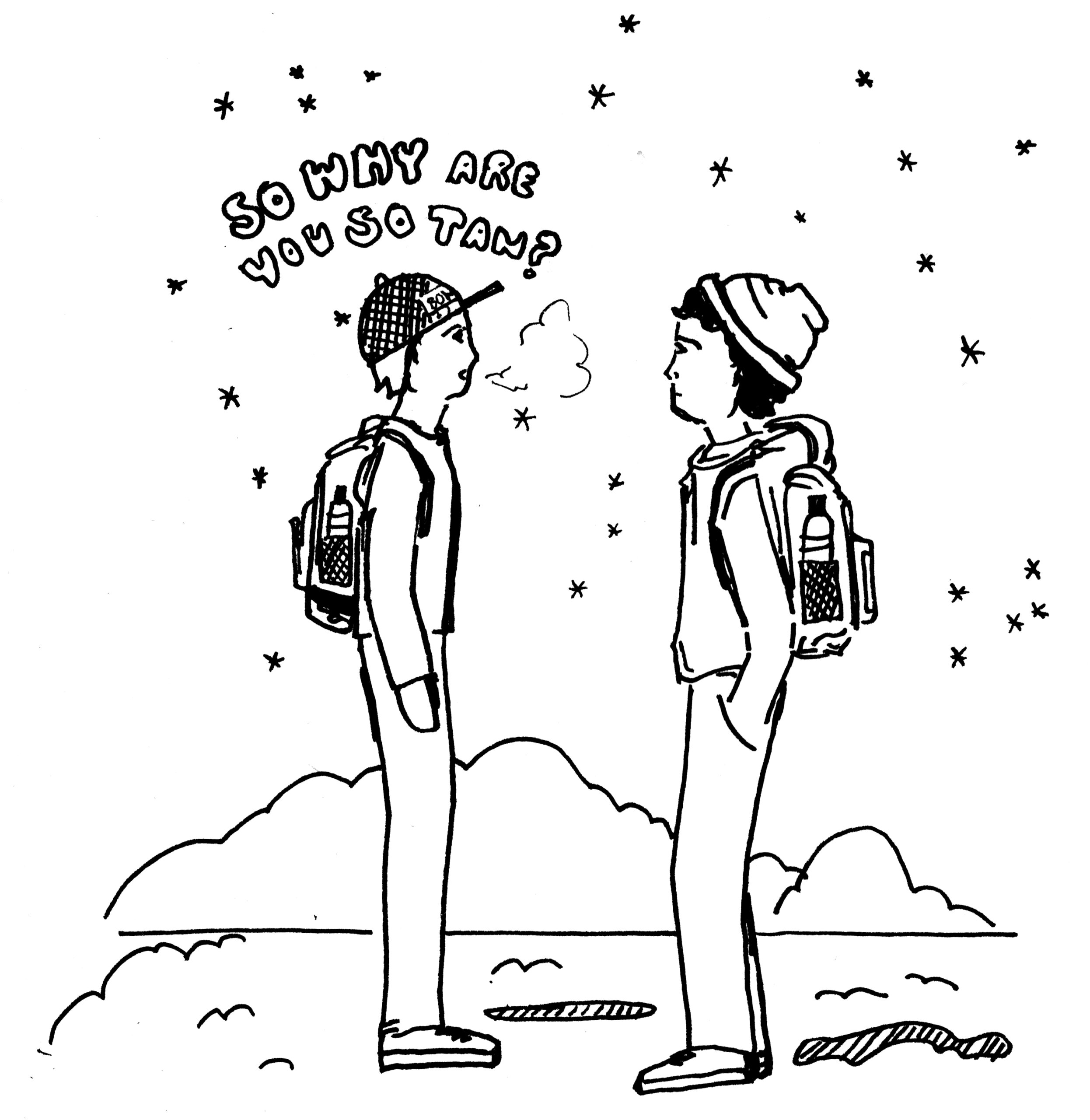Growing up mixed
March 4, 2017
 This
piece represents the opinion of the author
.
This
piece represents the opinion of the author
.
Every now and then someone will ask me where I am from and I’ll tell them that I’m from Baltimore. One of two reactions follow. Either my questioner will hesitantly accept the answer and walk away or they’ll try again. “But where are you really from?” I’ll then answer with the response I know that they are seeking. “My mom is Indian and my dad is Scottish.”
My mom was born in New York City to two Indian parents. She has spent many childhood summers in India, but she has lived in the United States for almost all of her life. My dad was born in Edinburgh, Scotland and grew up in Jamaica and Canada but has also lived in the United States for most of his life. My mom has brown (Indian-looking) skin. My dad has pale, white skin. My skin looks somewhere in between, as one might expect. When I am standing next to both my parents, my skin tone makes sense to people. However, without them around, people tend to get confused. Throughout elementary, middle and high school, I’ve been called a variety of ethnicities and nationalities, ranging from Australian to Greek to half black to Chilean.
My ethnicity also drew friends and peers to call me more offensive names. My middle school self bore the brunt of the attack. In the sixth and seventh grades, many of my friends called me “paky” and “pakmule,” implying that I was from Pakistan. In eighth grade, most of my friends switched over to calling me “half-breed.” By high school, my friends learned that these names were not socially acceptable and they stopped using them for the most part. However, as a freshman on the JV soccer team, a group of the sophomores thought it would be funny to start calling me “terrorist” at practice. This only lasted for a couple weeks, fortunately.
Being mixed had its benefits too. Friends would express their jealousy of my year-round tan. And, despite some of the offensive names I was called, I generally found people’s confusion at my skin color rather amusing and in middle school I learned to make a game out of it. I’d tell people that I was half Polynesian and half Aboriginal Australian. I’d make up ethnicities and nationalities. After I took World Cultures in seventh grade, I started telling people I was from Mughal (as in the Mughal Empire). I’d tell people that I was white and just had an intense tan because I went to sailing camp. Some people were more gullible than others, but I could usually get away with most of my responses.
Once I learned that I could convince people that I was fully white, I often found myself hiding the fact that I was half-Indian. I knew that my fellow peers thought that all Indians were small and weak and worked exclusively at convenient stores or as dentists. I didn’t want this association, so instead of trying to convince my people that this wasn’t true of all Indians, I chose to hide my background. I got pretty good at this. I would try my best to hide my multi-compartmental metal lunch container (from India) under the table. I would quickly eat the idlis my mom would sometimes pack me so no one would ask me about them. I would never correct people’s mispronunciation of my name in order to avoid explaining where it is from.
In retrospect, I am not proud of hiding my background. I’m proud of my mixed heritage, but it took me a while to understand that I could be proud of my mixed heritage. Only very recently have I stopped pushing back against my Indian background and started to embrace it. This summer I will be living in India with my family for a couple of months and I’m excited to learn what I can about the country and its people. I also started learning Hindi in my free time have even started to ask friends to pronounce my name correctly.
Zakir Bulmer is a member of the Class of 2019.


Comments
Before submitting a comment, please review our comment policy. Some key points from the policy: